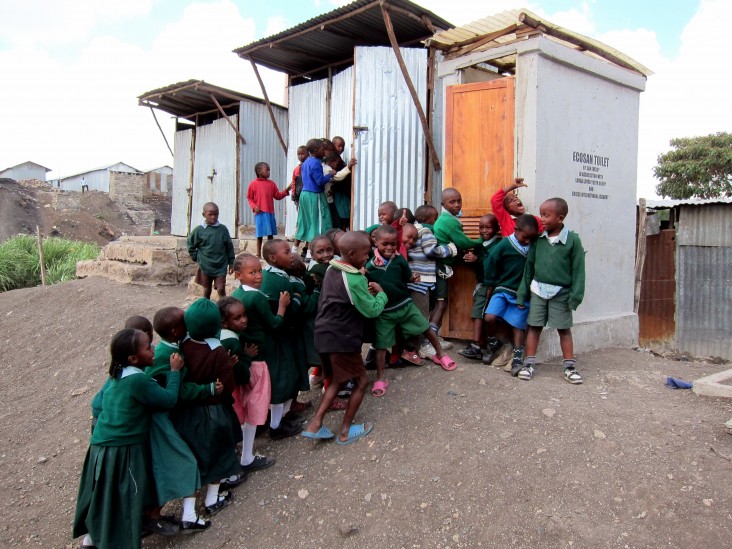- What We Do
- Agriculture and Food Security
- Democracy, Human Rights and Governance
- Economic Growth and Trade
- Education
- Ending Extreme Poverty
- Environment and Global Climate Change
- Gender Equality and Women's Empowerment
- Global Health
- Water and Sanitation
- Water and Development Strategy
- Advancing Water Supply, Sanitation and Hygiene
- Urban Sanitation
- Promoting Water Productivity and Efficiency
- Investing in Water and Natural Resources Management
- Enhancing Water and Disaster Risk Reduction
- Learning and Sharing in the Water Sector
- From The Field
- World Water Day
- Working in Crises and Conflict
- U.S. Global Development Lab

According to the United Nations, as many as 1.1 billion people practice open defecation. Without proper latrines or toilets people must go behind bushes, in open fields, or use plastic bags. The world is also far from meeting the Millennium Development Goal (MDG) for sanitation. Globally, improvements in sanitation have only increased to 63 percent, well below the 75 percent MDG target. Achieving this target is tremendously important. And no other single intervention brings greater public health returns.
Inadequate access to improved sanitation facilities, as well as deteriorating infrastructure and poor sanitation behaviors, lead to decreased health and increased environmental contamination. Poor sanitation can have huge economic burdens as well, reducing productivity and tourism and increasing health costs. Safety and dignity are also concerns, especially for women and girls who lose opportunities in education and employment due to a lack of privacy from inadequate sanitation facilities.
USAID is committed to increasing access to sustainable sanitation services through:
- Creating demand for sanitation services;
- Promoting good sanitation behaviors;
- Generating access to latrines and sanitation services; and
- Institutionalizing good governance, management and maintenance of these systems.
In order to provide sustainable, cost-effective and efficient sanitation services in both urban and rural communities, USAID promotes community-based approaches to improve sanitation, such as community-led total sanitation (CLTS) and sanitation marketing, and fosters partnerships with both the public and private sector.
In addition, USAID aims to promote environmental protection by supporting services to ensure that latrines are properly maintained over the long term and that both effective and environmentally sound methods are used to remove, transport and dispose of waste.
Specific projects include:
- USAID’s Water, Sanitation and Hygiene Enterprise Development (WaterSHED) project initiated a “hands-off” approach to sanitation marketing in Cambodia that introduced innovative technologies, provided technical and managerial assistance and training to local businesses and engaged with local governments in support of the creation of a sustainable business environment for sanitation services
- USAID’s Transboundary Water for Biodiversity and Human Health in the Mara River Basin (TWB-MRB) project in Kenya and Tanzania helped over 11,000 people gain access to improved sanitation facilities, including VIP latrines; 7,000 more than originally projected. The sanitation activities focused on schools with handwashing facilities and strategically placed demonstration VIP latrines within communities. These efforts are expected to lead to a significant reduction in waterborne and hygiene-related diseases.
- USAID is helping to develop public-private plans to manage fecal sludge in cities. Because urban areas often struggle with managing the large accumulation of sanitation waste, USAID recently began working in cities in Senegal and testing potential business options in Madagascar.







Comment
Make a general inquiry or suggest an improvement.